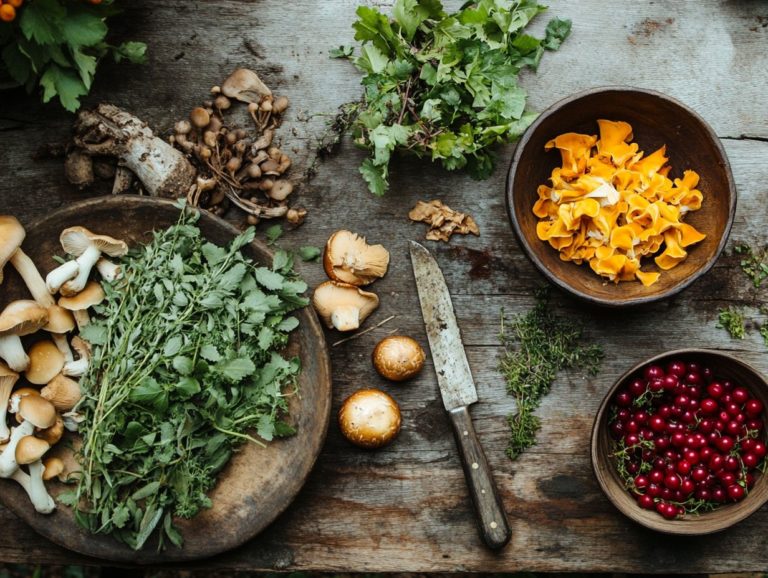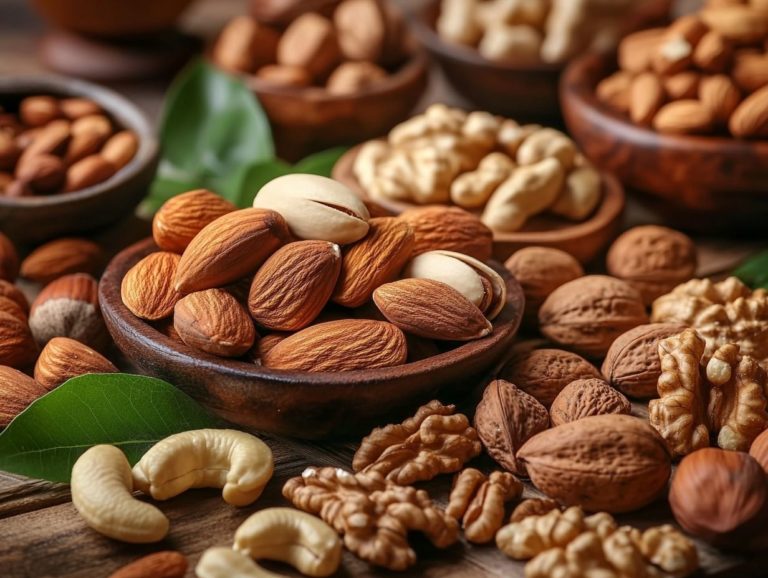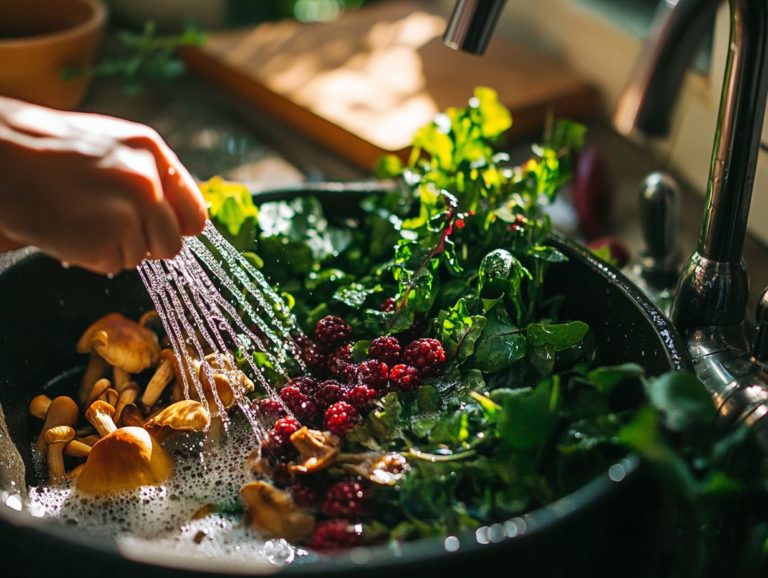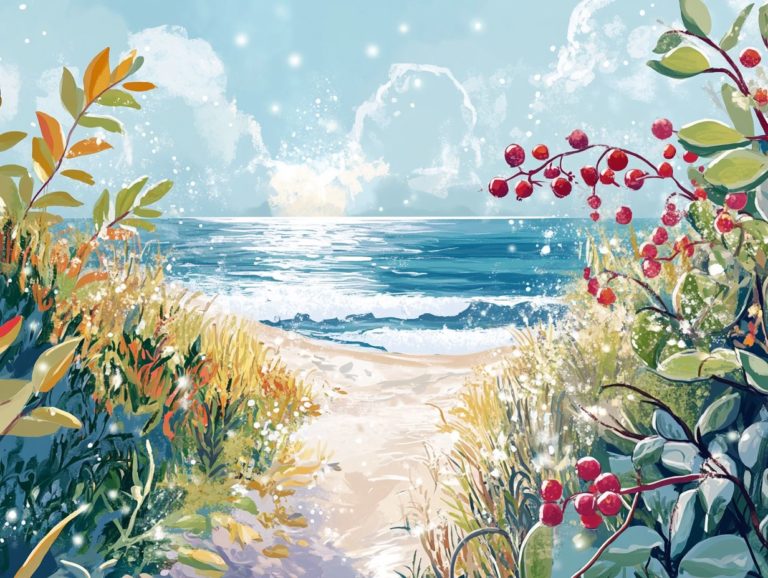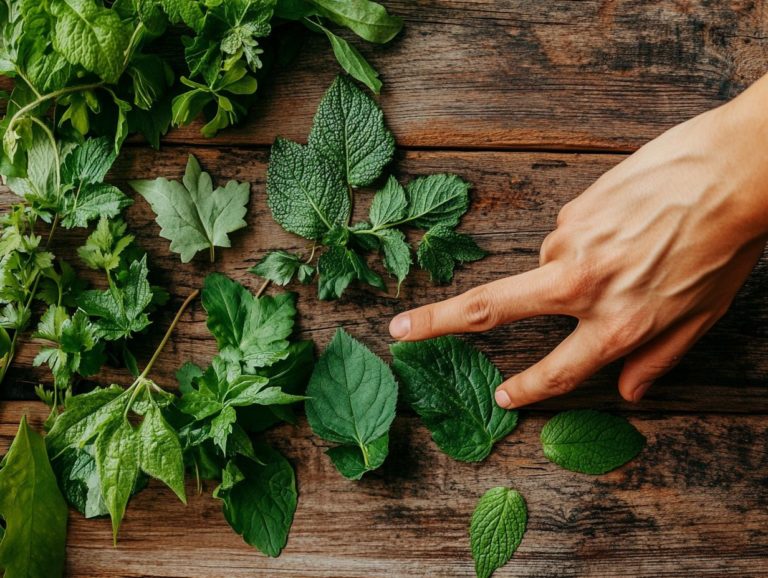How to Preserve Wild Edibles?
Discover the exciting flavors of wild edibles right in your backyard or local woods! These plants offer a variety of delicious meals and nutrients just waiting to be unearthed.
Learning how to preserve these natural delights not only enhances your culinary skills but also supports healthy eating that helps the environment.
This article explores the nutritional and environmental benefits of wild edibles, outlines effective preservation techniques like canning, drying, and freezing, and shares tips for harvesting, storage, and innovative wild food recipes.
Whether you’re a seasoned forager or just curious about what s out there, you ll uncover the benefits of wild food that can elevate your culinary journey.
Contents
Key Takeaways:
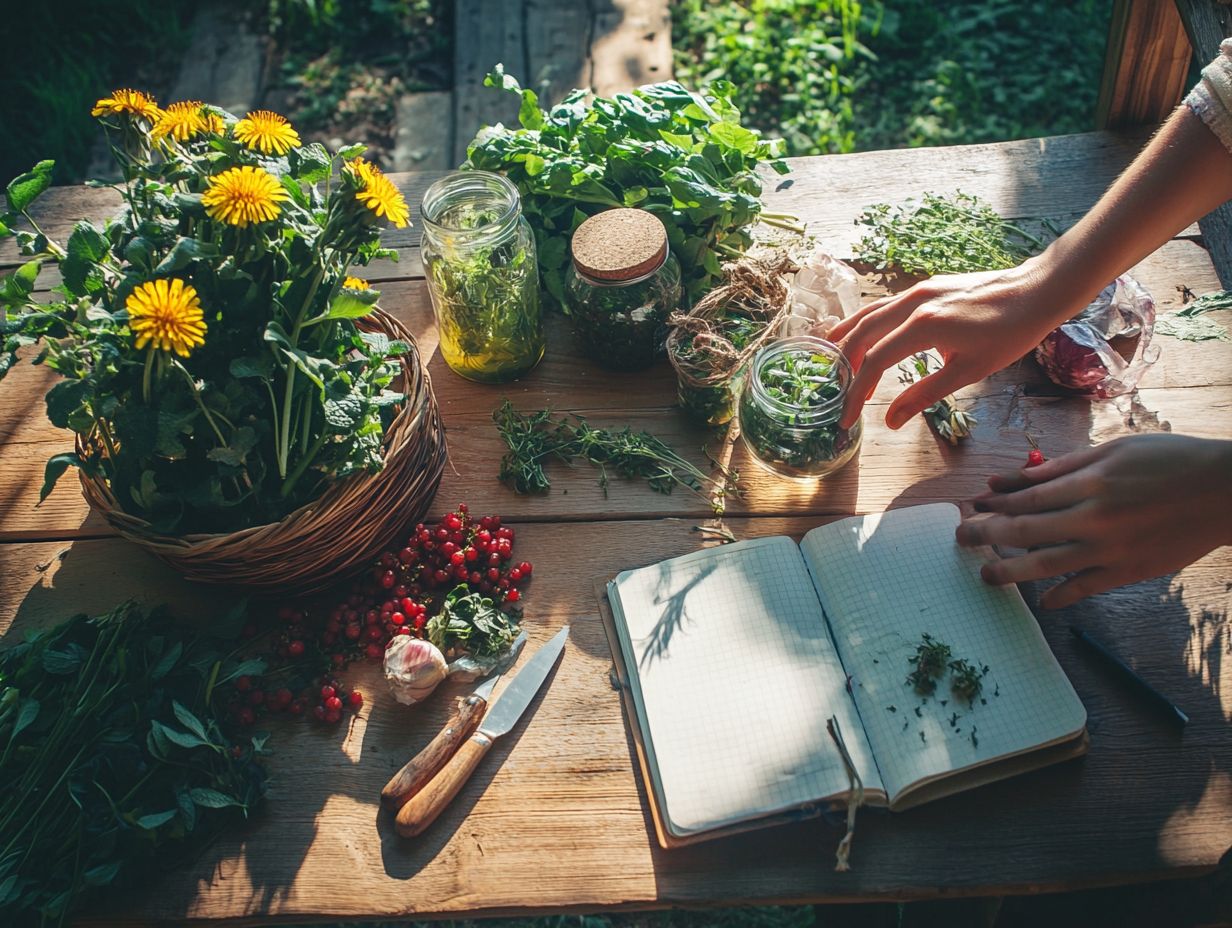
- Preserve wild edibles for unique flavors and sustainability.
- Use canning, drying, and freezing for longer shelf life.
- Harvest responsibly and get creative with wild food recipes.
What are Wild Edibles?
Wild edibles represent a captivating array of plants and fungi that flourish naturally, offering not just delicious meals but also a healthy way to eat. They include common varieties like mushrooms, nettles, and ramps, which can be ethically harvested while adhering to sustainable practices.
By diving into foraging, you can embrace seasonal living, fostering a deeper connection with nature and enriching your diet with nutritious wild plants.
Beyond the familiar varieties, wild edibles also include hidden gems like dandelion greens, purslane, and wild garlic, each thriving in unique ecosystems from forests to meadows. Foraging cultivates a greater appreciation for biodiversity and strengthens community bonds as enthusiasts gather to share knowledge and experiences.
Responsible harvesting is crucial to ensure these natural resources remain abundant for generations to come. As the wild food community grows, the focus on ethical foraging practices becomes increasingly important, promoting a harmonious relationship with the environment that nourishes us all.
Benefits of Preserving Wild Edibles
Preserving wild edibles offers numerous benefits, extending the shelf life of seasonal foods and enhancing your diet while fostering sustainable food practices.
By using food preservation techniques such as canning, drying, and freezing, you can enjoy the remarkable nutritional value of wild plants year-round. These methods also build your wild food pantry, ensuring that nature’s rich harvest remains a vital part of your culinary adventures.
Nutritional and Environmental Benefits
The nutritional benefits of wild edibles are truly remarkable. They often surpass those of store-bought greens in terms of vitamins, minerals, and antioxidants. By incorporating these wild plants into your diet, you actively support your overall health and wellness.
Harvested in their natural environments, these edibles contribute to local ecosystems and biodiversity. They reinforce sustainable practices that honor and protect the planet, showcasing the importance of wild plant nutrition.
When you embrace wild food, you enhance your nutritional intake and promote seasonal living. This deepens your connection to the land and its resources, like fresh wild greens and wild herbs.
Take nettles, for example they’re bursting with vitamins A, C, and K, along with iron and calcium. These nutrients bolster immune function and strengthen bones. Dandelion roots, on the other hand, pack a powerful punch of antioxidants and can support digestion and liver health. This contributes to the overall benefits of wild edible plants.
By incorporating these wild edible plants into your meals, you’re not just nourishing your body; you’re also championing environmental stewardship. Practicing sustainable foraging, such as gathering only what you need and respecting the growth patterns of these plants, helps preserve their habitats and promotes wild food preservation. This ensures that future generations can enjoy their benefits as well.
Methods for Preserving Wild Edibles
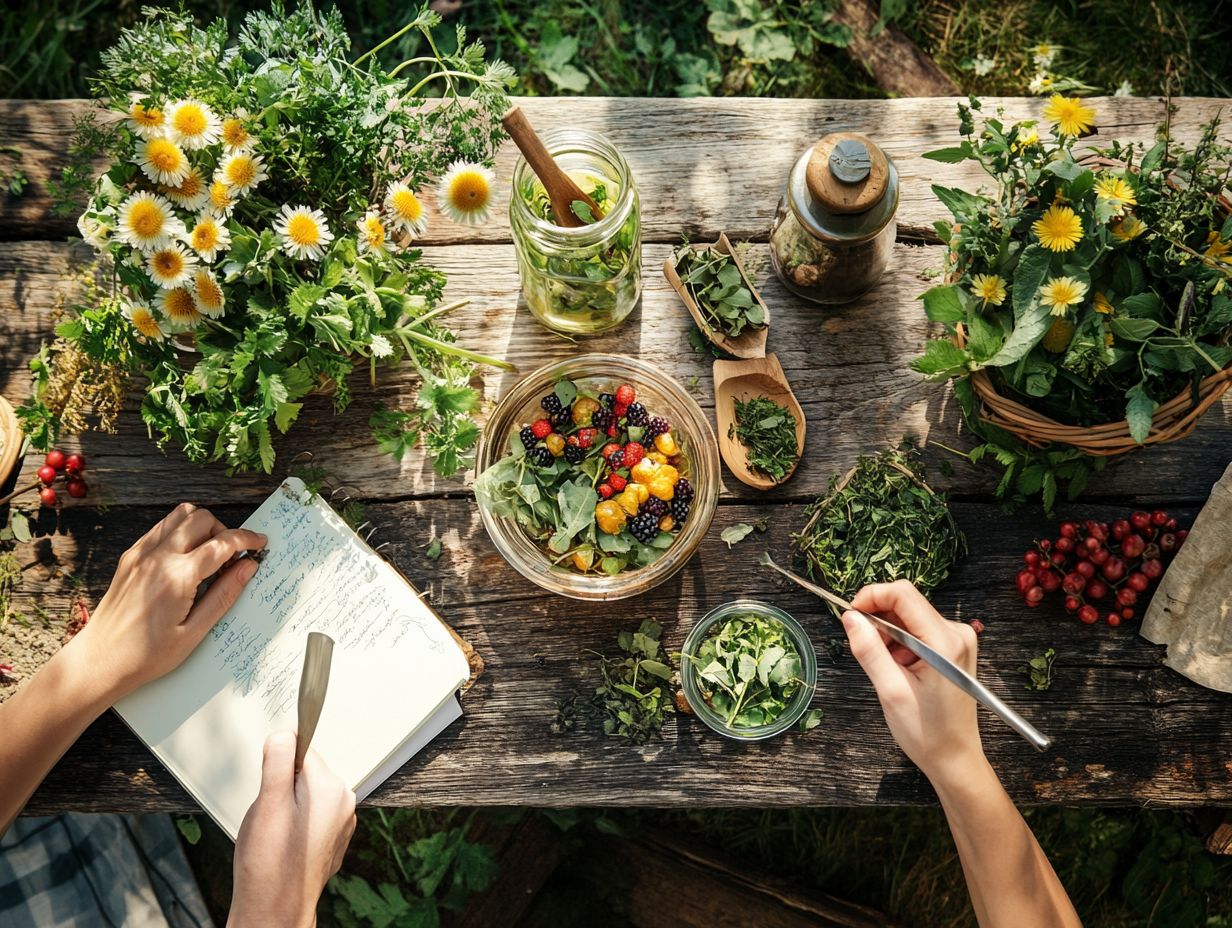
You can choose from many exciting ways to preserve wild edibles, including blanching and storing methods. Each method promises to enhance their flavors in amazing ways while maintaining their nutritional value. This ensures you can enjoy their benefits year-round.
Techniques such as canning, drying herbs, and freezing offer you the chance to savor vibrant greens, fruits, and even wild jam recipes made from elderberries and blackberries well beyond the harvest season.
By selecting the right method for each specific wild plant, you enhance their natural flavors and textures. This transforms them into extraordinary staples in your wild food pantry, making use of innovative preservation techniques.
Canning
Canning is an exceptionally effective preservation method. It allows you to seal wild edibles in jars, creating a vacuum that keeps them safe and delicious for extended periods. For low-acid foods, utilizing a pressure canner is essential, as it reaches temperatures that eliminate harmful bacteria. This makes it a trusted choice for preserving a variety of wild foods, such as jams made from elderberries and blackberries, which are celebrated in many wild food recipes.
By mastering the canning process, you broaden your culinary skills and enable yourself to savor the rich flavors of wild harvests throughout the year. This unlocks countless wild food benefits.
To get started, gather your essential kitchen equipment: glass jars, lids, a pressure canner, and a jar lifter for safe handling. It’s vital to sterilize your jars and lids beforehand to minimize any risk of contamination. Pay close attention to safety precautions, ensuring your pressure canner is properly sealed to prevent steam from escaping.
Begin with low-acid fruits like elderberries or blackberries, and don t hesitate to experiment with flavor pairings. Perhaps add a hint of vanilla or a dash of citrus zest to elevate the taste, or try adding honey for a unique twist.
By following these steps, you can enjoy successful canning experiences and craft delightful homemade preserves that celebrate the unique flavors of nature. Start your adventure with wild edibles today! Embrace nature s bounty and taste the difference.
Drying
Drying is an exceptional food preservation method that allows you to store wild edibles, like herbs and greens, in a compact and lightweight form. This method retains their vibrant flavors and nutritional value. Whether you choose to use a dehydrator or opt for air drying, you can transform these wild herbs into delightful seasonings that elevate your culinary creations. This technique broadens your cooking options with wild plants and aligns with sustainable food practices by reducing waste.
Before you dive into the drying process, take the time to properly clean and prepare the greens. Ensuring they are free from dirt and pests is crucial. Rinse gently under cool water, soak greens if needed, and then pat them dry to significantly impact the quality of your final product.
Once dried, these herbs can be creatively woven into a variety of dishes or steeped into herbal teas. Imagine how dried basil can elevate your pasta sauces or how dried chamomile can provide a soothing touch to your evening teas. This adds a fresh twist to your meals and enhances your cooking with wild edibles.
Feel free to experiment with exciting blends! This not only enhances flavor but also introduces intriguing dimensions to your everyday meals and special occasions, especially when exploring wild food recipes.
Freezing
Freezing is a highly effective preservation method that allows you to keep wild edible plants fresh and packed with nutrients. This makes them a delightful addition to your meals even months after harvest. Before you freeze, be sure to thoroughly clean greens like lambs quarters and watercress. Blanching keeps their color and texture fresh when thawed, which aligns with best practices for preserving wild food. By mastering effective freezing techniques, you can relish the health benefits and flavors of wild edibles while minimizing food waste in your kitchen.
To prepare your wild greens, rinse them thoroughly in cold water to remove any dirt or lingering insects. Don’t skip the blanching process; this involves briefly boiling the greens before plunging them into ice water. This step helps retain vibrant colors and preserves essential nutrients, critical for wild plant nutrition.
Once cooled and drained, package them properly opt for airtight freezer bags or plastic containers, ensuring all air is removed to prevent the dreaded freezer burn. For optimal storage, keep your greens at a constant temperature of 0 F or lower.
Get creative! Use these frozen greens in your favorite dishes:
- Stir-fries
- Soups
- Nutritious smoothies
- Wild fruit leather
This makes it incredibly easy to weave wild edibles into your everyday cooking.
Best Practices for Preserving Wild Edibles

Implementing best practices for preserving wild edibles is essential to ensure that their nutritional value and flavors remain intact throughout the harvesting and processing stages. Mastering proper harvesting techniques knowing the right time and method for picking wild plants is crucial for maintaining quality, especially when utilizing tips from experienced foragers.
Cleaning greens properly is important, especially when foraging wild plants. Utilizing the right kitchen tools, such as sharp knives and clean cutting boards, can greatly enhance the preservation process. This enables you to fully savor the wild food bounty, a treasure from the foraging world at your disposal.
Proper Harvesting and Preparation Techniques
Following proper harvesting and preparation techniques is crucial for ensuring that wild edibles maintain their quality, flavor, and health benefits. Understanding the optimal times for harvesting and employing methods like soaking greens and quickly boiling vegetables before freezing can significantly elevate your wild food experience.
For instance, soaking freshly harvested wild plants like dandelion greens or nettles in cold water for about 20 minutes helps dislodge stubborn soil and softens their bitter edges, making them a delight to your palate.
Experienced foragers often emphasize the importance of cleaning edibles thoroughly, especially when dealing with mushrooms like chanterelles, which are fantastic for foraging. Sometimes, they rinse them multiple times to ensure all grit is gone. Storage is also important; using breathable bags or plastic containers that allow proper refrigeration can extend freshness. Blanching before freezing helps preserve both flavor and texture, allowing you to relish your wild bounty well into the colder months.
Consider the story of a seasoned forager like Linda Runyon, who utilizes sustainable practices and discovered the magic of wild garlic. Her first encounter transformed her culinary adventures and highlighted the importance of careful handling and preparation in unlocking the full potential of these natural gifts.
Storing and Using Preserved Wild Edibles
Storing and utilizing preserved wild edibles allows you to savor the rich flavors and nutritional benefits of foraged ingredients all year long, fostering a profound connection to seasonal living.
Implementing effective freezing methods and canning, especially when using a pressure canner for preserving wild fruits, ensures your wild food pantry is stocked with dried herbs and processed plants. This pantry can be brimming with vibrant greens, fruits, and herbs. For example, elderberries can be transformed into syrup or jam, while blackberries, a delightful wild fruit, can be preserved as jam, always ready to elevate your culinary endeavors.
Experimenting with inventive recipes that highlight these preserved treasures deepens your appreciation for the abundant gifts nature provides.
Tips for Long-Term Storage and Creative Recipes
To keep your preserved wild edibles fresh and bursting with flavor, it s crucial to embrace specific tips for long-term storage. This will ensure that your wild food preservation efforts truly shine.
Start by storing these precious treasures in a cool, dark space. Avoid plastic, as it holds heat, and keep them far from sunlight and moisture, both of which can hasten spoilage. Vacuum-sealed bags work wonders for dried goods, expertly removing excess air to maintain their delightful texture and flavor.
If you re venturing into the world of canning, opt for jars with two-piece lids to create a tight seal that locks in not just taste but also vital nutritional value. Once your stored delights are ready, let your culinary imagination run wild with creative recipes. You might try wild mushroom risotto, a vibrant nettle pesto, or wild fruit leather made from fresh wild fruits adding variety to your culinary repertoire.
Let each dish take your taste buds on an adventure! Explore the versatility of your wild food pantry and inspire a wave of culinary creativity that s bound to impress.
Frequently Asked Questions
Here are some common questions about preserving wild edibles:
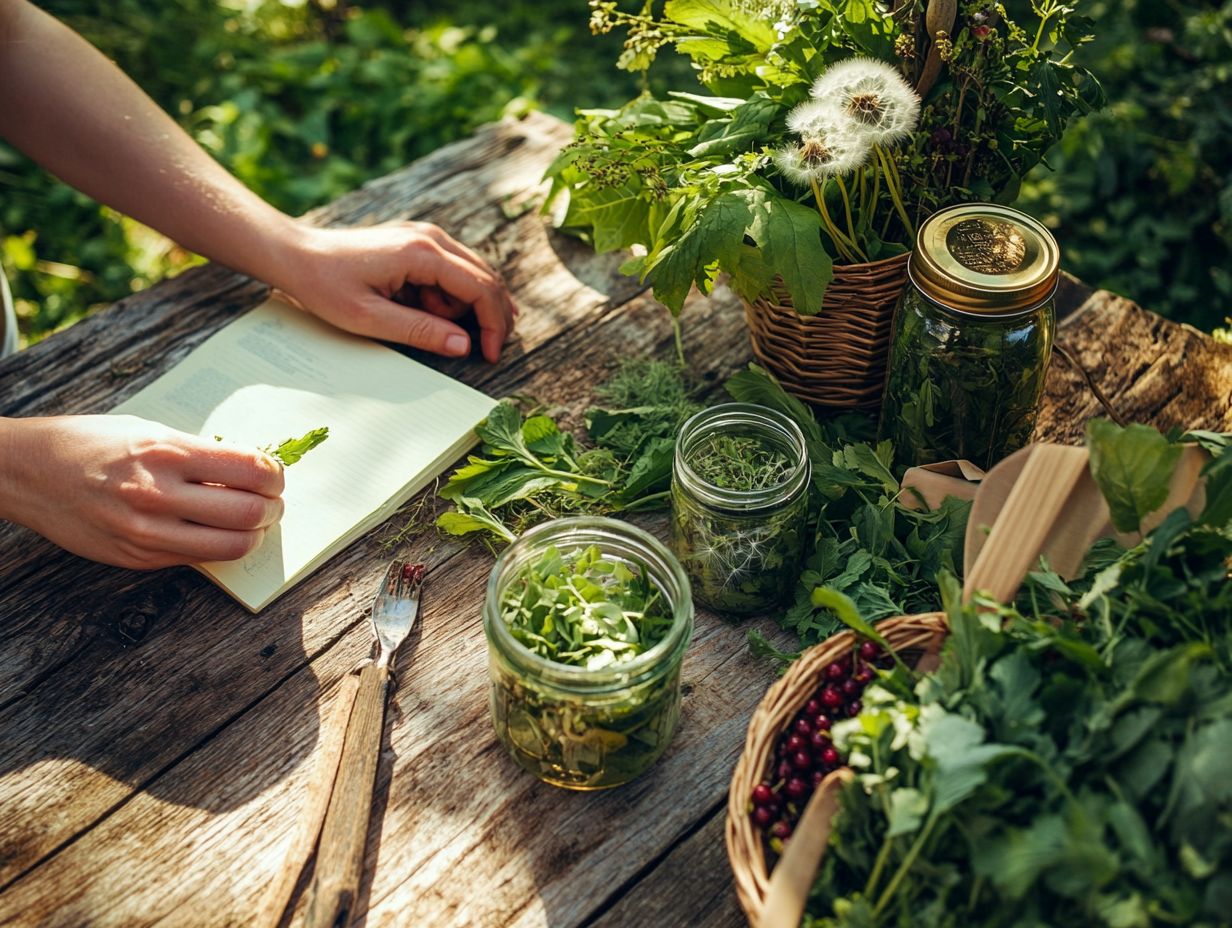
What is the best way to preserve wild edibles?
The best way to preserve wild edibles is by drying them. This method retains flavor and nutrients while extending shelf life, and you can learn more about it in our guide on how to preserve your foraging finds.
How do I dry wild edibles?
To dry wild edibles, spread them on a clean towel in a well-ventilated area. You can also use a dehydrator or an oven on a low setting for quicker results.
Can I freeze wild edibles for preservation?
Yes, freezing is an excellent method. Just blanch them in boiling water for a few seconds, then store them in an airtight container in the freezer.
Is it safe to can wild edibles?
Absolutely! Canning is safe and effective. Just follow proper procedures and use the right equipment.
Are there any other methods for preserving wild edibles?
You can also pickle or ferment wild edibles. These methods add unique flavors while preserving the food for longer periods.
How long can I store preserved wild edibles?
The shelf life varies by method. Dried wild edibles can last up to a year. Frozen and canned ones can last several years if stored correctly.
Don t let your wild edibles go to waste! Use these preservation methods today and enjoy the delicious flavors throughout the year!

